





|
STUDENT DIGITAL NEWSLETTER ALAGAPPA INSTITUTIONS |

|
Barbara A Fivush, M.D.

https://www.hopkinsmedicine.org/profiles/results/directory/profile/0004482/barbara-fivush
If the edges of the spreader are rough medicine 8 - love shadow discount dilantin 100 mg, films with ragged tails will result and gross qualitative irregularity in the distribution of cells will be the rule symptoms stomach cancer purchase dilantin 100mg otc. The bigger leucocytes (neutrophils and monocytes) will accumulate in the margins and tail while lymphocytes will predominate in the body of the film medications for factor 8 proven dilantin 100mg. If these are not available medicine remix discount 100 mg dilantin mastercard, writing can be done by scratching with the edge of a slide. Touch a clean cover glass to the top of a small drop of blood without touching the skin and place it blood side down, cross- wise on another cover glass so that the corners will as an eight-pointed star. If the drop is not too large and if the cover glasses are perfectly clean, the blood will spread out evenly and quickly in a thin layer between the two surfaces. After they are stained they are mounted film side down with permount film side down on glass slides. Spinner method 70 Hematology Blood films that combine the advantages of easy handling of the wedge slide and uniform distribution of cells of the coverglass preparation may be made with special types of centrifuges known as spinners. The spinner slide produces a uniform blood film, in which all cells are separated (a monolayer) and randomly distributed. White cells can be easily identified at any spot in the film On a wedge smear there is a disproportion of monocytes at the tip of the feather edge, of neutrophils just in from the feather edge, and of both at the later edges of the film. This is of little practical significance, but it does result in slightly lower monocyte counts in wedge films. Desirable qualities of a thin blood film · · the availability of sufficient working area. Acceptable morphology within working area and minimum distortion of the distribution of the blood cells in particular the leucocytes. Margins of the film should be smooth, continuous and accessible for oil-immersion examination. Preparation of thick blood smears Thick blood smears are widely used in the diagnosis of blood parasites particularly malaria. It gives a higher percentage of positive diagnosis in much less time since it has ten times the thickness of normal smears. Five minutes spent in examining a thick blood film is equivalent to one hour spent in traversing the whole length of a thin blood film. Method Place a small drop of blood on a clean slide and spread it with an applicator stick or the corner of another slide until small prints are just visible through the blood smear. Which technique of blood film preparation is commonly employed and how is the method of preparation? What are the possible effects of using a blood sample that has been standing at room temperature for some time on blood cell morphology? Jenner (1880) found that the precipitate formed when eosin and methylene blue are mixed could 74 Hematology be dissolved in methyl alcohol to form a useful stain combining certain properties of both parent dye stuffs. Principle of staining Acidic dyes such as eosin unites with the basic components of the cell (cytoplasm) and hence the cytoplasm is said to be eosinophilic (acidic). Conversely, basic stains like methylene blue are attracted to and combine with the acidic parts of the cell (nucleic acid and nucleoproteins of the nucleus) and hence these structures are called basophilic. Romanowsky stains in common use 75 Hematology Modern Romanowsky stains in common. Wright stain In its preparation, the methylene blue is polychromed by heating with sodium carbonate. Place the air-dried smear film side up on a staining rack (two parallel glass rods kept 5cm apart). When it is planned to use an aqueous or diluted stain, the air dried smear must first be fixed by flooding for 3-5 minutes with absolute methanol. Dilute with distilled water (approximately equal volume) until a metallic scum 76 appears. Without disturbing the slide, flood with distilled water and wash until the thinner parts of the film are pinkish red. Leishman Stain In its preparation, the methylene blue is polychromed by heating a 1 % solution with 0. Giemsa stain Instead of empirically polychromed dyes, this stain employs various azure compounds (thionine and its methyl derivative) with eosin and methylene blue). It is commonly used in combination with Jenner or May Grunwald stains it constitutes "panoptic staining". Staining of thick smears the stains used employ the principle of destroying the red cells and staining leucocytes and parasites. Cover the air-dried smear with a 1:10 diluted Giemsa using buffered distilled water at pH 6. Panoptic staining Panoptic staining consists of a combination of a Romanowsky stain with another stain. This improves the staining of cytoplasmic granules and other bodies like nucleoli of blast cells. Transfer the slides without washing to a jar containing Giemsa stain freshly diluted with 9 volumes of buffered water pH 6. Dry the films in the air then fix by immersing in a jar containing methanol for 10-20 minutes. The rapid technique is ideally suited for staining blood films from waiting outpatients and when reports are required urgently. Place the slide on a staining rack and cover the methanol-fixed thin film with approximately 0. The stain can be easily applied and mixed on the slide by using 1ml graduated plastic bulb pipettes. Wipe the back of the slide clean and place it in a draining rack for the film to air-dry. Drain off the excess stain by touching a corner of the slide against the side of the container. Excessively blue stain · Causes: too thick films, prolonged staining, inadequate washing, too high alkalinity of stain or diluent · Appearance: erythrocytes-blue green, nuclear chromatin-deep blue to black, granules of neutrophils-deeply stained and appear large and prominent. Excessively pink stain · Causes: insufficient staining, prolonged washing, too high acidity of the stain or buffer (exposure of stain or buffer to acid fumes). Precipitate on the film · Causes: unclean slides, drying during the period of staining, inadequate washing of slide at the end of the staining period · Correction: use clean slides, cover the smear with generous amount of the stain, wash the slide until thinner parts of the film are pinkish 84 Hematology Review Questions 1. Describe the appearance of cells and cell components in Romanowsky- stained thin blood films. Introduction Visual counting of blood cells is an acceptable 86 Hematology alternative to electronic counting for white cell and platelet counts. It is not recommended for routine red cell counts because the number of cells which can be counted within a reasonable time in the routine laboratory will be too few to ensure a precise result. Yet it is still necessary for the technologist to be able to use this method effectively and to know its limitations. Any cell counting procedure includes three steps: dilution of the blood, sampling the diluted suspension into a measured volume, and counting the cells in that volume. The main principles for such examinations are: · Selection of a diluting fluid that not only will dilute the cells to manageable levels but will either identify them in some fashion or destroy contaminant cellular elements. Counting Chambers the hemocytometer is a thick glass slide with inscribed platforms of known area and precisely controlled depth under the coverslip. In the center of the upper surface 87 Hematology there are ruled areas separated by moats/channels from the rest of the slide and two raised transverse bars one of which is present on each side of the ruled area. The ruled portion may be in the center of the chamber (single chamber) or there may be an upper and lower ruled portion (double chamber). The double chamber is to be recommended since it enables duplicate counts to be made rapidly. When an optically plane cover glass is rested on the raised bars there is a predetermined gap or chamber formed between its lower surface and the ruled area (fig. This is called the depth of the chamber and it varies with the type of the chamber. The ruled area itself is divided by microscopic lines into a pattern that varies again with the type of the chamber. The counting chamber recommended for cell counts is a metallized surface (Bright-line) double cell Improved N e u b a u e r r u l e d c h a m b e r. N o n - m e t a l l i z e d hemocytometer are less expensive, but they are not recommended. The 4 corner squares are divided into 16 squares, each with an area of 1/16 of a mm2.
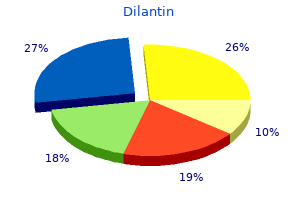
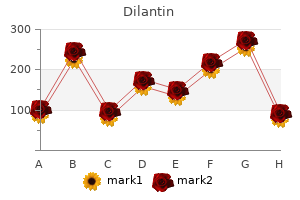
As a result symptoms high blood sugar buy discount dilantin 100 mg online, these toxins are "shunted" into the hepatic veins unaltered and eventually reach the brain through the systemic circulation ("portalsystemic encephalopathy") medications for rheumatoid arthritis buy dilantin 100 mg with amex. Function of the Urea Cycle during Fasting During fasting medications ranitidine generic 100 mg dilantin with mastercard, the liver maintains blood glucose levels treatment 21 hydroxylase deficiency generic dilantin 100 mg online. Amino acids from muscle protein are a major carbon source for the production of glucose by the pathway of gluconeogenesis. As amino acid carbons are converted to glucose, the nitrogens are converted to urea. As fasting progresses, however, the brain begins to use ketone bodies, sparing blood glucose. Less muscle protein is cleaved to provide amino acids for gluconeogenesis, and decreased production of glucose from amino acids is accompanied by decreased production of urea (see Chapter 31). The major amino acid substrate for gluconeogenesis is alanine, which is synthesized in peripheral tissues to act as a nitrogen carrier (see Fig. The absolute level of ammonia and its metabolites, such as glutamine, in the blood or cerebrospinal fluid in patients with hepatic encephalopathy correlates only roughly with the presence or severity of the neurologic signs and symptoms. In addition, other compounds (such as aromatic amino acids, false neurotransmitters, and certain short-chain fatty acids) bypass liver metabolism and accumulate in the systemic circulation, adversely affecting central nervous system function. Their relative importance in the pathogenesis of hepatic encephalopathy remains to be determined. Therefore, this amino acid is not required in the diet of the adult; however, it is required in the diet for growth. Total nitrogen excretion was measured as well as the nitrogen in urea (dark area). This ammonia, as well as ammonia produced by other bacterial reactions in the gut, is absorbed into the hepatic portal vein. Approximately one fourth of the total urea released by the liver each day is recycled by bacteria. Alanine, the key gluconeogenic amino acid, is transaminated to form pyruvate, which is converted to glucose. Two molecules of alanine are required to produce one molecule of glucose and one molecule of urea. The nitrogen from the two molecules of alanine is converted to one molecule of urea (Fig. Fortunately, bed rest, rehydration, parenteral nutrition, and therapy directed at decreasing the production of toxins that result from bacterial degradation of nitrogenous substrates in the gut lumen. As with most patients who survive an episode of fulminant hepatic failure, recovery to his previous state of health occurred over the next 3 months. Ammonia is toxic to the nervous system, and its concentration in the body must be carefully controlled. Under normal conditions, free ammonia is rapidly fixed into either -ketoglutarate (by glutamate dehydrogenase, to form glutamate) or glutamate (by glutamine synthease, to form glutamine). The glutamine can be used by many tissues, including the liver; the glutamate donates nitrogens to pyruvate to form alanine, which travels to the liver. However, when a urea cycle enzyme is defective, the cycle is interrupted, which leads to an accumulation of urea cycle intermediates before the block. Because of the block in the urea cycle, glutamine levels increase in the circulation, and because -ketoglutarate is no longer being regenerated by removal of nitrogen from glutamine, the -ketoglutarate levels are too low to fix more free ammonia, leading to elevated ammonia levels in the blood. The metabolism of benzoic acid (A) and phenylbutyrate (B), two agents used to reduce nitrogen levels in patients with urea cycle defects. Low-protein diets are essential to reduce the potential for excessive amino acid degradation. If the enzyme defect in the urea cycle comes after the synthesis of argininosuccinate, massive arginine supplementation has proved beneficial. Once argininosuccinate has been synthesized, the two nitrogen molecules destined for excretion have been incorporated into the substrate; the problem is that ornithine cannot be regenerated. If ornithine could be replenished to allow the cycle to continue, argininosuccinate could be used as the carrier for nitrogen excretion from the body. Thus, ingesting large levels of arginine leads to ornithine production by the arginase reaction, and nitrogen excretion via argininosuccinate in the urine can be enhanced. Arginine therapy will not work for enzyme defects that exist in steps before the synthesis of argininosuccinate. The conjugated amino acids are excreted, and the body then has to use its nitrogen to resynthesize the excreted amino acid. The two compounds most frequently used are benzoic acid and phenylbutyrate (the active component of pheylbutyrate is pheylacetate, its oxidation product. As glycine is synthesized from serine, the body now uses nitrogens to synthesize serine, so more glycine can be produced. This conjugate removes two nitrogens per molecule and requires the body to resynthesize glutamine from glucose, thereby using another two nitrogen molecules. This is because the defect only has to be repaired in one cell type (in this case, the hepatocyte), which makes it easier to target the vector carrying the replacement gene. Preliminary gene therapy experiments had been carried out on individuals with ornithine transcarbamolyase deficiency (the most common inherited defect in the urea cycle), but the experiments came to a halt when one of the patients died of a severe immunologic reaction to the vector used to deliver the gene. This incident has placed gene replacement therapy in the United States "on hold" for the foreseeable future. Deficiency diseases have been described that involve each of the five enzymes of the urea cycle. Infants with defects in the first four enzymes usually appear normal at birth, but after 24 hours progressively develop lethargy, hypothermia, and apnea. One possible explanation for the swelling is the osmotic effect of the accumulation of glutamine in the brain produced by the reactions of ammonia with -ketoglutarate and glutamate. Arginase deficiency is not as severe as deficiencies of the other urea cycle enzymes. Blood Arginine Low Low High Low Low Blood Ammonia High High Moderately high High High (A) Carbamolyphosphate synthetase I (B) Ornithine transcarbamoylase (C) Argininosuccinate synthetase (D) Argininosuccinate lyase (E) Arginase 2. Pyridoxal phosphate, which is required for transaminations, is also required for which of the following pathways? Only these 20 common amino acids are incorporated into proteins during the process of protein synthesis. Modifications to these amino acids occur after they are incorporated into proteins (such as the synthesis of hydroxyproline in collagen). The major exception to this rule is selenocysteine, which is an essential component of enzymes involved in scavenging free radicals (such as glutathione peroxidase-1; see Chapter 24). Synthesis and Degradation of Amino Acids Because each of the 20 common amino acids has a unique structure, their metabolic pathways differ. Despite this, some generalities do apply to both the synthesis and degradation of all amino acids. Because a number of the amino acid pathways are clinically relevant, we present most of the diverse pathways occurring in humans. Important coenzymes: Pyridoxal phosphate (derived from vitamin B6) is the quintessential coenzyme of amino acid metabolism. In degradation, it is involved in the removal of amino groups, principally through transamination reactions and in donation of amino groups for various amino acid biosynthetic pathways. It is also required for certain reactions involving the carbon skeleton of amino acids. Synthesis of the amino acids: Eleven of the twenty common amino acids can be synthesized in the body (Fig. Almost all of the amino acids that can be synthesized by humans are amino acids used for the synthesis of additional nitrogen-containing compounds. Examples include glycine, which is used for porphyrin and purine synthesis; glutamate, which is required for neurotransmitter and purine synthesis; and aspartate, which is required for both purine and pyrimidine biosynthesis. Nine of the eleven "nonessential" amino acids can be produced from glucose plus, of course, a source of nitrogen, such as another amino acid or ammonia. The other two nonessential amino acids, tyrosine and cysteine, require an essential amino acid for their synthesis (phenylalanine for tyrosine, and methionine for cysteine). The carbons for cysteine synthesis come from glucose; the methionine only donates the sulfur. Four amino acids (serine, glycine, cysteine, and alanine) are produced from glucose through components of the glycolytic pathway. The regulation of individual amino acid biosynthesis can be quite complex, but the overriding feature is that the pathways are feedback regulated such that as the concentration of free amino acid increases, a key biosynthetic enzyme is allosterically or transcriptionally inhibited.
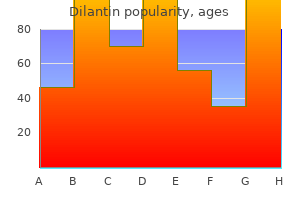
The urate crystals also resulted in release of chemical mediators of inflammation that recruited other cells into the area medicine bow wyoming order dilantin 100 mg line. This further amplified the acute inflammatory reaction in the tissues of the joint caspsule (synovitis) 5ht3 medications dilantin 100mg low price, leading to the extremely painful swelling of acute gouty arthritis treatment 3 antifungal purchase dilantin 100 mg amex. The late endosomes mature into lysosomes as they progressively accumulate newly synthesized acid hydrolases and vesicular proton pumps brought to them in clathrin-coated vesicles from the Golgi 6mp medications generic dilantin 100mg free shipping. Thus, lysosomes do not acquire their full digestive power until after sorting of membrane lipids and proteins for recycling. Within the Golgi, enzymes are targeted for endosomes (and eventually lysosomes) by addition of mannose 6-phosphate residues that bind to mannose 6phosphate receptor proteins in the Golgi membrane. The mannose 6-phosphate receptors together with their bound acid hydrolases are incorporated into the clathrin-coated Golgi transport vesicles and released. The transport vesicles lose their clathrin coat and then fuse with the late endosomal membrane. The acidity of the endosome releases the acid hydrolases from the receptors into the vesicle lumen. For example, phagocytes, located mainly in the spleen and liver, remove approximately 3 1011 red blood cells from the circulation each day. During pregnancy, breast tissue is remodeled to develop the capacity for lactation; after weaning of an infant, the lactating breast returns to its original state (involution). Neutrophils and macrophages, the major phagocytic cells, devour pathogenic microorganisms and clean up wound debris and dead cells, thus aiding in repair. As bacteria or other particles are enclosed into clathrin-coated pits in the plasma membrane, these vesicles bud off to form intracellular phagosomes. The phagosomes fuse with lysosomes, where the acidity and digestive enzymes destroy the contents. The autophagosome fuses with a lysosome, and the contents of the phagolysosome are digested by lysosomal enzymes. Organelles usually turn over much more rapidly than the cells in which they reside. Cells that are damaged but still viable recover, in part, by using autophagy to eliminate damaged components. Undigested material may remain in the lysosomes to form residual bodies, which are either extruded or remain in the cell as lipofuscin granules. Outer membrane Matrix Inner membrane folded into cristae If a significant amount of undigestible material remains within the lysosome after the digestion process is completed, the lysosome is called a residual body. Depending on the cell type, residual bodies may be expelled (exocytosis) or remain indefinitely in the cell as lipofuscin granules that accumulate with age. Each mitochondrion is surrounded by two membranes, an outer membrane and an inner membrane, separating the mitochondrial matrix from the cytosol (Fig. The transport of ions occurs principally through facilitative transporters in a type of secondary active transport powered by the proton gradient established by the electron transport chain. The outer membrane contains pores made from proteins called porins and is permeable to molecules with a molecular weight up to about 1000 g/mole. Mitochondria can replicate by division; however, most of their proteins must be imported from the cytosol. These reactions produce the toxic chemical hydrogen peroxide (H2O2), which is subsequently used or degraded within the peroxisome by catalase and other enzymes. Peroxisomes function in the oxidation of very long chain fatty acids (containing 20 or more carbons) to shorter chain fatty acids, the conversion of cholesterol to bile acids, and the synthesis of ether lipids called plasmalogens. Peroxisomal diseases are caused by mutations affecting either the synthesis of functional peroxisomal enzymes or their incorporation into peroxisomes. For example, adrenoleukodystrophy probably involves a mutation that decreases the content of a transporter in the peroxisomal membrane. Replication, transcription, translation, and the regulation of these processes are the major focus of the molecular biology section of this text (see Section Three). The nucleus is separated from the rest of the cell (the cytoplasm) by the nuclear envelope, which consists of two membranes joined at nuclear pores. Ribosomes, which are generated in the nucleolus, also must travel through nuclear pores to the cytoplasm. Conversely, proteins required for replication, transcription, and other processes pass into the nucleus through these pores. Thus, transport through the pore is specific for the molecule and the direction of transport. Proteins transported into the nucleus have a nuclear localization signal that causes them to bind to one of the subunits of cytosolic proteins called importins. The other subunit of the importin molecule binds to cytoplasmic filaments attached to the outer ring of the nuclear pore. The function of each of the five major classes of Ras monomeric G proteins in cell biology is summarized in Table 10. Some Family Members H-Ras, K-Ras, N-Ras, Ral A, Rad, Rap, Rit, Location and Membrane Attachment Site Anchored to plasma membrane by farnesyl, palmitoyl, or other lipid groups Anchored to plasma membrane by lipids, and translocates to cytosol Arf is anchored to vesicular membranes by myristyl groups, but Sar is anchored by the protein itself. Anchored to lipid membranes with geranylgeranyl (C20 isoprenoid) groups and other lipids Not anchored to lipid membrane. The approximately 100 different polypeptide chains of the nuclear pore complex form an assembly of 8 spokes attached to two ring structures (a cytoplasmic ring in the outer nuclear membrane and a nuclear ring through the inner membrane) with a transporter "plug" in the center. Small molecules, ions, and proteins with less than a 50-kDa mass passively diffuse through the pore in either direction. Proteins with the nuclear localization signal bind to importins, which carry them through the nuclear pore into the nucleus. This causes dissociation of the importin subunits and release of the imported protein in the nucleus. The nucleoprotein forms a complex with additional proteins called exportins and with Ran. It contains enzymes for the synthesis of many lipids, such as triacylglycerols and phospholipids. It also contains the cytochrome P450 oxidative enzymes involved in metabolism of drugs and toxic chemicals such as ethanol and the synthesis of hydrophobic molecules such as steroid hormones. In contrast, proteins encoded by the nucleus and found in the cytosol, peroxisomes, or mitochondria are synthesized on free ribosomes in the cytosol and are seldom modified by the attachment of oligosaccharides. It consists of a curved stack of flattened vesicles in the cytoplasm that is generally divided into three compartments: the cis-Golgi network, which is often convex and faces the nucleus; the medial Golgi stacks; and the trans Golgi network, which often faces the plasma membrane (Fig. Vesicles that go to late endosomes (eventually lysosomes) from the Golgi or the plasma membrane are clathrin-coated. Vesicle transport, as well as transport of organelles and secretory proteins, occurs along microtubules (structures formed from the protein tubulin). Glycoproteins or glycolipids once anchored in the membrane of the vesicle remain in the plasma membrane when the vesicular and plasma membranes fuse. The cholera toxin is endocytosed in caveolae vesicles that subsequently merge with lysosomes (or are transformed into lysosomes), where the acidic pH contributes to activation of the toxin. Arf forms a complex with the A-toxin that promotes its travel between compartments. The hormone insulin is synthesized as a prohormone, proinsulin, which is incorporated into secretory vesicles. These vesicles contain a protease that is activated by the acidic pH of the secretory vesicle. Exocytotic vesicles release proteins into the extracellular space after fusion of the vesicular and plasma cell membranes. Actin and tubulin, which are involved in cell movement, are dynamic structures composed of continuously associating and dissociating globular subunits. Intermediate filaments, which play a structural role, are composed of stable fibrous proteins that turn over more slowly. Microtubules Microtubules, cylindrical tubes composed of tubulin subunits, are present in all nucleated cells and the platelets in blood (Fig. The microtubule network (the minus end) begins in the nucleus at the centriole and extends outward to the plasma membrane (usually the plus end). Lotta Topaigne was given colchicine, a drug that is frequently used to treat gout. One of its actions is to prevent phagocytic activity by binding to dimers of the and subunits of tubulin. When the tubulin dimercolchicine complexes bind to microtubules, further polymerization of the microtubules is inhibited, depolymerization predominates, and the microtubules disassemble.

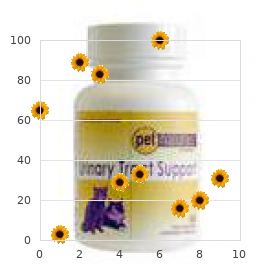
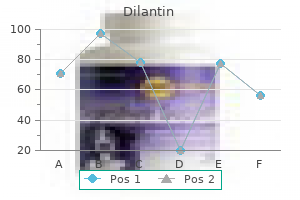
Corticosteroids reduce inflammation treatment quad tendonitis purchase 100mg dilantin fast delivery, in part medicine omeprazole cheap dilantin 100mg, through their inhibitory effect on phospholipase A2 treatment 02 binh dilantin 100mg on-line. Despite the unquestionable value of glucocorticoid therapy in a variety of diseases associated with acute inflammation of tissues treatment of lyme disease buy 100 mg dilantin amex, the suppression of the inflammatory response with pharmacologic doses of corticosteroids is potentially hazardous. The sudden appearance of temporary glucose intolerance when Emma Wheezer was treated with large doses of dexamethasone, a gluconeogenic steroid (glucocorticoid), is just one of the many potential adverse effects of this class of drugs when given systemically in pharmacologic doses over an extended period. The inhaled steroids, conversely, have far fewer systemic side effects because their absorption across the bronchial mucosa into the circulation is very limited. This property allows them to be used over prolonged periods in the treatment of asthma. The fact that inhalation allows direct delivery of the agent to the primary site of inflammation adds to their effectiveness in the treatment of these patients. It involves an increase of the blood supply to the affected region by means of Although our knowledge of the spectrum of biologic actions of the endogenous eicosanoids is incomplete, several actions are well-enough established to allow their application in a variety of clinical situations or diseases. Men with certain forms of sexual impotence can self-inject this agent into the corpus cavernosum of the penis to induce immediate but temporary penile tumescence. The capillaries become more permeable so that fluid, large molecules, and white blood cells can cross, leaving the blood and entering the tissue. White blood cells (particularly neutrophils and monocytes) move by chemotaxis to the injured site. Redness (rubor), heat (calor), swelling (tumor), and pain (dolor) are associated with the inflammatory process. Swelling is the result of the increased movement of fluid and white blood cells into the area of inflammation. Pain is caused by the release of chemical compounds and the compression of nerves in the vicinity of the inflammatory process. The chemical mediators of inflammation usually are produced by activation of complement (a family of blood proteins that are cleaved to form active fragments) or of the blood clotting cascade (see Chapter 45). These processes cause the release of histamine from mast cells, and the production of kinins by cleavage of kininogens. Among their other effects, both histamine and kinins increase vascular permeability. They stimulate the synthesis of eicosanoids that act on the motility and metabolism of white blood cells and cause the aggregation of platelets to arrest bleeding. Some of the prostaglandins act on thermoregulatory centers of the brain, producing fever. Cytokines are also released that stimulate the proliferation of cells involved in the immune response. Glucose Acetyl CoA Arachidonic acid Oleic acid Leukotrienes Aspirin will inhibit which of the following reaction pathways? Thromboxane A2, which is found in high levels in platelets, aids in wound repair through induction of which of the following activities? Certain prostaglandins, when binding to their receptor, induce an increase in intracellular calcium levels. The signal that leads to the elevation of intracellular calcium is initiated by which of the following enzymes? We will concentrate on reviewing the regulatory mechanisms that determine the flux of metabolites in the fed and fasting states, integrating the pathways that were described separately under carbohydrate and lipid metabolism. The next section of the book covers the mechanisms by which the pathways of nitrogen metabolism are coordinated with fat and carbohydrate metabolism. For the species to survive, it is necessary for us to store excess food when we eat and to use these stores when we are fasting. Regulatory mechanisms direct compounds through the pathways of metabolism involved in the storage and utilization of fuels. These mechanisms are controlled by hormones, by the concentration of available fuels, and by the energy needs of the body. Changes in hormone levels, in the concentration of fuels, and in energy requirements affect the activity of key enzymes in the major pathways of metabolism. Intracellular enzymes are generally regulated by activation and inhibition, by phosphorylation and dephosphorylation (or other covalent modifications), by induction and repression of synthesis, and by degradation. Phosphorylation and dephosphorylation of enzymes affect metabolism slightly less rapidly. Induction and repression of enzyme synthesis are much slower processes, usually affecting metabolic flux over a period of hours. The pathways of metabolism have multiple control points and multiple regulators at each control point. The function of these complex mechanisms is to produce a graded response to a stimulus and to provide sensitivity to multiple stimuli so that an exact balance is maintained between flux through a given step (or series of steps) and the need or use for the product. Pyruvate dehydrogenase is an example of an enzyme that has multiple regulatory mechanisms. Regardless of insulin levels, the enzyme cannot become fully activated in the presence of products and absence of substrates. The major hormones that regulate the pathways of fuel metabolism are insulin and glucagon. In liver, all effects of glucagon are reversed by insulin, and some of the pathways that insulin activates are inhibited by glucagon. Thus, the pathways of carbohydrate and lipid metabolism are generally regulated by changes in the insulin/glucagon ratio. Although glycogen is a critical storage form of fuel because blood glucose levels must be carefully maintained, adipose triacylglycerols are quantitatively the major fuel store in the human. After a meal, both dietary glucose and fat are stored in adipose tissue as triacylglycerol. This fuel is released during fasting, when it provides the main source of energy for the tissues of the body. Because her hypoglycemic episodes were no longer occurring, she had no need to eat frequent carbohydrate snacks to prevent the adrenergic and neuroglycopenic symptoms that she had experienced when her tumor was secreting excessive amounts of insulin. Blood samples for glucose and electrolytes were drawn repeatedly during the first 24 hours. The hospital laboratory reported that the serum in each of these specimens appeared opalescent rather than having its normal clear or transparent appearance. This opalescence results from light scattering caused by the presence of elevated levels of triacylglycerol-rich lipoproteins in the blood When Ann Sulin initially presented with type 2 diabetes mellitus at age 39, she was approximately 30 lb above her ideal weight. Her high serum glucose levels were accompanied by abnormalities in her 14-hour fasting lipid profile. Mechanisms That Affect Glycogen and Triacylglycerol Synthesis in Liver After a meal, the liver synthesizes glycogen and triacylglycerol. The level of glycogen stored in the liver can increase from approximately 80 g after an overnight fast to a limit of approximately 200300 g. Adipose tissue has an almost infinite capacity to store fat, limited mainly by the ability of the heart to pump blood through the capillaries of the expanding adipose mass. Although we store fat throughout our bodies, it tends to accumulate in places where it does not interfere too much with our mobility: in the abdomen, hips, thighs, and buttocks. Both the synthesis of liver glycogen and the conversion by the liver of dietary glucose to triacylglycerol (lipogenesis) are regulated by mechanisms involving key enzymes in these pathways. For both processes, glucose is first converted to glucose 6-phosphate by glucokinase, a liver enzyme that has a high Km for glucose (Fig. Synthesis of glucokinase is also induced by insulin (which is elevated after a meal) and repressed by glucagon (which is elevated during fasting). This enzyme is activated by the dephosphorylation that occurs when insulin is elevated and glucagon is decreased (Fig. Phosphofructokinase-2, the enzyme that produces the activator fructose 2,6bisphosphate, is dephosphorylated and active after a meal (see Chapter 22). Pyruvate kinase is also activated by dephosphorylation, which is stimulated by the increase of the insulin/glucagon ratio in the fed state (see Fig. The enzyme that catalyzes this reaction, pyruvate carboxylase, is activated by acetyl CoA. Because acetyl CoA cannot directly cross the mitochondrial membrane to form fatty acids in the cytosol, it condenses with oxaloacetate, producing citrate.
Order 100mg dilantin with mastercard. 7 Sneaky Things Narcissists Say to Get You Back.
References